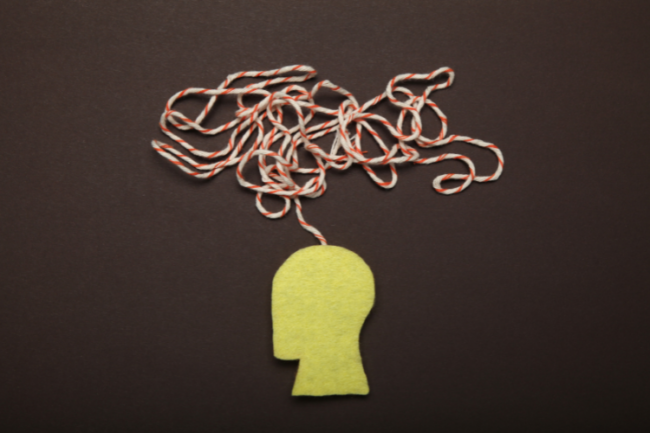Discover how anxiety symptoms are actually your body’s intelligent protection mechanisms, not broken responses. Learn how to work with your anxiety instead of fighting it, and transform your relationship with these misunderstood signals.
Your heart races. Your muscles tense. Your mind floods with worst-case scenarios as your breath becomes shallow and quick. In that moment, you’re absolutely certain of one thing: your anxiety is a malfunction- a broken alarm system triggering without cause, a defect in your psychological wiring.
What if everything you’ve been told about anxiety is fundamentally wrong?
The truth – one rarely acknowledged in our quick-fix culture – is that anxiety isn’t a disease to eradicate. Those uncomfortable sensations aren’t evidence of your brain malfunctioning. Quite the opposite: they’re sophisticated protection mechanisms designed through millions of years of evolutionary refinement.
This perspective shift isn’t just semantic wordplay. It represents a profound reimagining of your relationship with anxiety that neuroscience increasingly supports. And it might be the key that unlocks freedom from anxiety’s most debilitating effects.
As a therapist who’s guided hundreds through anxiety’s turbulent waters, I’ve witnessed remarkable transformations when people stop waging war against their anxiety and start understanding its protective intent. This approach diverges significantly from conventional treatment models that focus on symptom suppression.
What follows isn’t another listicle of breathing techniques (though we’ll cover practical strategies). Instead, I’ll reveal why anxiety feels so overwhelming, the actual purpose behind those distressing symptoms, and how recognizing anxiety’s misunderstood intelligence can fundamentally change your experience of it.
The Evolutionary Genius Behind Your Anxiety Response
Imagine our ancient ancestors on the savannah. Those who jumped at rustling leaves – even when it was just wind – survived more often than those who remained perfectly calm when a predator approached. The nervous systems that erred on the side of caution passed down their genes. Your anxiety isn’t broken. It’s the inheritance of survivors.
Dr. Stephen Porges, developer of Polyvagal Theory, explains: “Anxiety is not a disease. It’s an adaptive response to perceived threat that mobilizes resources to enhance survival.” This perspective fundamentally reframes anxiety symptoms as intelligently designed protective mechanisms rather than pathological malfunctions.
Consider the physical sensations of anxiety. Rapid heartbeat increases blood flow to large muscles, preparing you to fight or flee. Hypervigilance heightens sensory awareness, making you more attuned to potential dangers. Even catastrophic thinking serves an evolutionary purpose – mentally rehearsing worst-case scenarios prepares you to respond effectively if they occur.
The problem isn’t the anxiety response itself but its inappropriate activation in contemporary contexts. Your body doesn’t distinguish between a predator and a performance review. The same survival system activates whether you’re facing a bear or giving a presentation.
This protection system becomes problematic in modern life for three key reasons:
1. It’s anticipatory rather than responsive
Unlike our ancestors, who encountered immediate threats, we spend hours, days, or weeks anticipating future scenarios. This extended anticipation keeps your protection system perpetually activated, never allowing your body to complete the stress cycle.
2. It lacks appropriate discharge outlets
The energy mobilized for physical action (fight or flight) often has nowhere to go in modern threats. You can’t run from financial stress or fight an impossible deadline, so the energy remains trapped in your system, creating chronic tension.
3. It’s entangled with identity and meaning
Modern stressors often threaten our sense of self rather than physical safety. Social rejection, failure, or embarrassment activate the same protection systems, but with complex psychological dimensions our ancestors never faced.
Understanding these evolutionary origins shifts perspective – your anxiety isn’t broken; it’s doing exactly what it was designed to do. The environment has changed, but your protection system is still operating on ancient programming.
Three Surprising Ways Anxiety Actually Protects You
Beyond the basic survival mechanisms, anxiety serves sophisticated protective functions rarely acknowledged in conventional treatment approaches. Recognizing these hidden benefits can transform how you relate to anxious experiences.
1. Anxiety as Information: Your Body’s Intelligence System
Anxiety often arises when you’re ignoring important information about your life situation. That persistent worry about your job might not be irrational rumination but accurate recognition that your position is unstable or misaligned with your values. The tension you feel in certain relationships might be your nervous system accurately detecting subtle manipulation or boundary violations.
Neuroscientist Antonio Damasio’s research on somatic markers demonstrates how bodily sensations (including anxiety symptoms) reflect complex evaluations happening below conscious awareness. Your body often knows what your mind hasn’t yet admitted.
Sarah, a former client, experienced intense anxiety about a new romantic relationship despite her partner’s apparent perfection. Rather than dismissing these feelings as “just anxiety,” we explored them as potential information. This exploration revealed subtle controlling behaviors that she had been overlooking. Her anxiety wasn’t irrational; it was protective intuition.
The therapeutic question shifts from “How do I stop this anxiety?” to “What might this anxiety be trying to tell me?” This perspective honors anxiety as an information system rather than a problem to eliminate.
2. Anxiety as Boundary: Maintaining Psychological Safety
Anxiety often intensifies when you’re exceeding your capacity or violating personal boundaries. The panic attack before public speaking might reflect that you’re not incapable, but rather that you’ve pushed beyond your current window of tolerance without adequate support.
Your nervous system maintains homeostasis not just physically but psychologically. Anxiety can function as an internal boundary system, alerting you when you’re taking on too much, moving too quickly, or engaging in situations that threaten your sense of safety or integrity.
James, an executive with debilitating performance anxiety, discovered his symptoms emerged specifically in meetings where he felt pressured to misrepresent facts to clients. His anxiety wasn’t performance dysfunction; it was integrity protection – his body’s resistance to violating his values.
When viewed through this lens, anxiety symptoms become meaningful signals about your limits and values rather than obstacles to overcome or ignore.
3. Anxiety as Connection: The Social Regulation System
Perhaps most surprising is anxiety’s function within our social connection systems. Humans evolved as tribal creatures whose survival depended on group belonging. Social anxiety, rather than being a pathological fear, reflects the profound biological importance of maintaining secure connections.
Research on neuroception, which is how our nervous system evaluates safety, shows that feeling securely connected to others regulates our autonomic nervous system. Anxiety often spikes when this connection system perceives threat, either actual rejection or subtle cues that signal potential ostracism.
Dr. Stephen Porges notes: “Our nervous systems are perpetually searching for safety, and they find it primarily through connection with other regulated nervous systems.” This explains why anxiety often diminishes in the presence of safe, attuned relationships and intensifies when we feel isolated.
Understanding anxiety as a connection regulation system helps explain why supportive relationships are so powerful in anxiety treatment – they’re not just providing emotional comfort but actually helping regulate the biological systems underlying anxiety responses.
How Reframing Anxiety Changes Your Relationship With It
When you recognize anxiety as protective rather than pathological, something remarkable happens: the way you experience anxiety itself begins to transform. This shift isn’t merely conceptual but neurobiological.
Consider what happens in the conventional approach: You feel anxiety symptoms, interpret them as dangerous or defective, which triggers secondary anxiety about the anxiety itself. This creates a self-amplifying feedback loop that transforms manageable activation into overwhelming panic.
Neuroscientist Joseph LeDoux calls this “fear of fear” phenomenon the primary driver of anxiety disorders. The initial anxiety response triggers a cascade of secondary responses – shame about being anxious, catastrophic interpretations of symptoms, and desperate attempts to suppress the experience.
When you reframe anxiety as protection, this cycle interrupts. You might still experience the primary sensations, but without the added layers of judgment, resistance, and escalation. The experience becomes more manageable not because the sensations diminish (though they often do), but because your relationship with them fundamentally changes.
This shift has profound neurobiological implications. Each time you respond to anxiety with acceptance rather than resistance, you’re rewiring neural pathways. You’re teaching your nervous system that these sensations aren’t emergencies that require escalation, but rather normal fluctuations in your protection system.
Dr. Kelly McGonigal’s research on stress mindsets shows how beliefs change biology. People who view stress as potentially helpful show different physiological responses than those who view it as harmful, including more adaptive cardiovascular patterns and different hormonal cascades.
The same applies to anxiety. When you view anxiety as a broken response, you activate additional stress circuits. When you view it as protection, you engage regulatory systems that modulate the experience.
This perspective shift doesn’t mean you’ll never feel uncomfortable anxiety again. Rather, it changes how you experience and respond to that discomfort. The goal isn’t elimination but transformation of your relationship with anxiety.
Working With—Not Against—Your Anxiety Signals
Conventional anxiety management focuses on controlling or eliminating symptoms. But if anxiety represents intelligent protection rather than dysfunction, a different approach emerges: working collaboratively with these signals rather than against them.
This doesn’t mean passively accepting debilitating anxiety. Instead, it means engaging with anxiety in ways that honor its protective intent while bringing more regulation and flexibility to the system. Here are practical approaches that embody this philosophy:
Befriending the Bodily Experience
The foundation of working with anxiety is developing a different relationship with the physical sensations themselves. Instead of interpreting bodily signals as emergencies, you can learn to witness them with curiosity.
Try this: The next time anxiety arises, focus on the physical sensations without attaching a narrative to what they mean. Notice where tension appears in your body. Is there tightness in your chest? Fluttering in your stomach? Observe these sensations as if you’re a scientist, noting their qualities – temperature, movement, intensity – without judging them as good or bad.
This practice, sometimes called “sensory grounding,” helps separate primary physical sensations from the catastrophic interpretations that amplify them. With repeated practice, your nervous system learns these sensations aren’t dangerous, reducing the secondary reaction that transforms activation into panic.
Dialoguing with the Protection System
Rather than trying to silence anxiety, try engaging with it as you would a well-intentioned but overprotective friend. This internal dialogue acknowledges the protective purpose of anxiety while introducing more nuanced information.
When anxiety arises, try asking: “What are you trying to protect me from right now?” Then listen internally for the answer. You might receive clear insights about genuine threats or recognize that your system is responding to old patterns rather than the present reality.
Next, respond with compassionate reassurance: “Thank you for trying to keep me safe. I understand why you’re activated. Here’s what’s different about this situation…” This approach honors the protection system’s intent while helping it update its threat assessment with current information.
Pendulation: Moving Between Activation and Regulation
Developed by trauma therapist Peter Levine, pendulation involves intentionally moving attention between sensations of activation (anxiety) and resources that promote regulation (safety, grounding, connection).
When anxiety intensifies, notice the activation in your body. Then, intentionally shift your attention to something that helps you feel grounded and safe – perhaps the sensation of your feet on the floor, the weight of your body supported by a chair, or a memory of feeling safe and connected.
After focusing on this resource for a moment, gently return attention to the anxiety sensations. Notice if anything has shifted. Continue this back-and-forth movement, helping your nervous system learn it can experience activation without becoming overwhelmed.
This practice builds neurological pathways between anxiety and regulation, gradually expanding your window of tolerance for these sensations without fighting against them.
Completing the Stress Cycle
Anxiety mobilizes energy for action that often has nowhere to go in modern contexts. Completing the stress cycle through physical movement helps discharge this mobilized energy.
Research by Drs. Emily and Amelia Nagoski demonstrates that physical activity signals to the body that the threat has passed and it’s safe to return to regulation. This doesn’t require intense exercise – even brief movements like shoulder rolls, gentle stretching, or a short walk can help complete the cycle.
The key is finding forms of movement that feel accessible and supportive rather than adding another “should” to your anxiety management approach.
The Paradoxical Path Forward
The transformation of anxiety begins with a paradox: What we resist, persists. The more we fight against anxiety, the more powerful it becomes. The path to freedom often requires not elimination but integration – learning to include anxiety in your experience without being defined or controlled by it.
This doesn’t mean resigning yourself to suffering. Rather, it means recognizing that the war against anxiety itself creates much of the suffering. When you stop fighting and start listening, anxiety often reveals itself as an intelligent, if sometimes outdated, protection system rather than your enemy.
The good news in this uncomfortable truth is profound: You aren’t broken. Your anxiety isn’t evidence of weakness or defect but of ancient wisdom encoded in your nervous system. Working with this wisdom, rather than against it, opens up possibilities for transformation that symptom-focused approaches rarely achieve.
As you move forward, consider approaching your next bout of anxiety with genuine curiosity. What might it be trying to protect you from? What information might it be offering? How might you acknowledge its protective intent while still choosing how to respond?
In that space between stimulus and response lies your freedom, not from anxiety itself, but from being controlled by it. And that might be the most valuable freedom of all.











